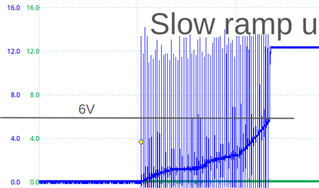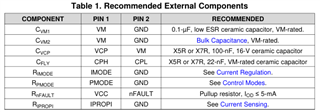Tool/software:
Dear Support Team,
I have configured DVR8874 to be in over-current only fault mode:

But in the application I see charging of a external elko to look like this:

I would expect to not have "current chopping" by my selection of IPROP.
May it be a problem, that nSLEEP is not driven by some logic, but on 3V3 power-up? Or in other words, can the problem be that the IPROP latching does not work the way I designed it?
Regards,
Simon



